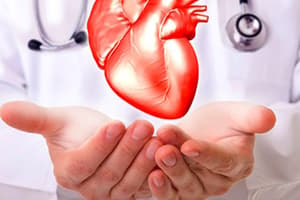Podcast
Questions and Answers
What is the primary function of arteries?
What is the primary function of arteries?
- To carry oxygenated blood away from the heart (correct)
- To connect veins and arteries
- To filter blood before it returns to the heart
- To return deoxygenated blood to the heart
What happens to arteries as they move further from the heart?
What happens to arteries as they move further from the heart?
- They fill with deoxygenated blood
- They branch and divide into smaller vessels (correct)
- They lose elasticity and strength
- They become larger and thicker
What condition is commonly associated with the development of an aneurysm?
What condition is commonly associated with the development of an aneurysm?
- Low cholesterol levels
- Atherosclerosis combined with high blood pressure (correct)
- Low blood pressure
- High red blood cell count
How do veins typically return blood to the heart?
How do veins typically return blood to the heart?
What is the role of capillaries in the vascular system?
What is the role of capillaries in the vascular system?
What is the normal range for systolic blood pressure?
What is the normal range for systolic blood pressure?
What does hypotension refer to?
What does hypotension refer to?
Which component of blood is responsible for carrying oxygen?
Which component of blood is responsible for carrying oxygen?
What is a potential consequence of hypertension?
What is a potential consequence of hypertension?
What process occurs during vasodilation?
What process occurs during vasodilation?
What is the main function of arteries?
What is the main function of arteries?
Which artery is located at the wrist?
Which artery is located at the wrist?
What is the role of the Vena Cava?
What is the role of the Vena Cava?
How long can the brain survive without oxygen before irreversible damage occurs?
How long can the brain survive without oxygen before irreversible damage occurs?
Which artery is located behind the knee?
Which artery is located behind the knee?
What is the primary function of capillaries?
What is the primary function of capillaries?
In which type of tissue would you find a higher density of capillaries?
In which type of tissue would you find a higher density of capillaries?
What term describes the swelling caused by excess fluid in tissues?
What term describes the swelling caused by excess fluid in tissues?
Which vessels are classified as large veins?
Which vessels are classified as large veins?
How does the distribution of capillaries vary in different tissues?
How does the distribution of capillaries vary in different tissues?
Flashcards are hidden until you start studying
Study Notes
Arteries
- Carry oxygenated blood away from the heart.
- Strong and resilient to withstand high pressure.
- Largest arteries are closest to the heart.
- Arteries branch and become smaller as they move away from the heart.
- Arterioles are the smallest arteries.
- Aneurysm: Bulging of an artery due to weakening of the arterial wall, often caused by atherosclerosis and high blood pressure.
Veins
- Return deoxygenated blood to the heart.
- Veins converge to form larger vessels as they approach the heart.
- Largest veins are closest to the heart.
- Veins have thinner walls and are closer to the body's surface than arteries.
- Main veins: Vena Cavae and Pulmonary Veins.
Capillaries
- Connect the smallest arteries to the smallest veins.
- Function as exchange vessels, transporting nutrients, wastes, and hormones between blood and tissues.
- Essential for survival.
- No cell is more than four to six cell widths from a capillary.
- Capillaries are not evenly distributed, with tissues requiring higher metabolic rates having more capillaries.
- Edema: Swelling
- Anastomosis: When two vessels connect.
- Systemic Circulation: Blood returns to the heart.
Arteries: Key Locations
-
Ascending Aorta
-
Aortic Arch
-
Descending Aorta
-
Pulse locations:
- Carotid Artery - Neck
- Brachial Artery - Front Elbow
- Radial Artery - Wrist
- Femoral Artery - Groin
- Popliteal Artery - Behind Knee
- Posterior Tibial Artery - Ankle
- Dorsalis Pedis Artery - Top of Foot
Brain Blood Supply
- Brain requires a constant supply of blood.
- Interruption of blood flow for even a few seconds can cause loss of consciousness.
- Irreversible brain damage occurs if the brain is deprived of oxygen for 4-5 minutes.
Veins: Principal Veins
- Drain blood from the organs and body, carrying it to the vena cava which delivers it to the right atrium of the heart.
- Vena Cava: The body's main vein.
- Superior Vena Cava: Receives blood from the head, shoulders, and arms.
- Inferior Vena Cava: Receives blood from the lower part of the body.
Blood Pressure
- Force exerted by blood against a vessel wall.
- Normal systolic pressure: 90-120 millimeters.
- Normal diastolic pressure: 60-80 millimeters.
- Hypotension: Lower than normal blood pressure.
- Hypertension: Higher than normal blood pressure, a risk factor for heart disease, stroke, and heart failure.
- Atherosclerosis: Buildup of plaque in arterial walls.
- Vasodilator: Opens a blood vessel.
- Vasoconstriction: Narrowing of a blood vessel.
Components of Blood
- Plasma: Liquid connective tissue, approximately 55% of blood volume.
- Red Blood Cells: Carry oxygen.
- White Blood Cells: Fight infection.
Studying That Suits You
Use AI to generate personalized quizzes and flashcards to suit your learning preferences.



